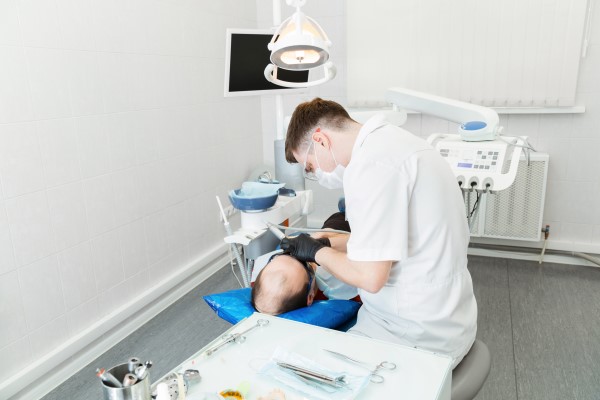Prevent Further Damage of a Chipped Tooth

A chipped tooth is not always a serious dental condition unless the damage reaches the pulp chamber. However, that does not mean it is okay to ignore a chipped tooth simply because it is not causing pain. The most likely part of a tooth to be affected by a chip is the outer layer known as enamel, but that is also the part that protects the rest of the tooth.
The loss of enamel leaves the more sensitive inner layers of a tooth without its natural protection from acids and bacteria. As a result, the tooth is more vulnerable to tooth decay and gum disease. To make matters worse, the tooth might become infected if it is left untreated. Regardless of how minor the damage to a tooth is, it is best to have a dentist evaluate the injury and determine the best way to treat it.
Protecting a chipped tooth from further damage
The best way to prevent a chipped tooth from turning into a bigger oral problem is by getting it checked out by a dentist. Dentists have treatments at their disposal that can be used to fix any aesthetic issues caused by the damage and to prevent further damage from occurring.
Standard treatments used to treat chipped teeth
Composite bonding: This is one of the more affordable treatments performed by dentists. It involves applying a moldable composite to the patient's teeth and rebuilding it. Composites are made from mixtures of plastics and glass. They can be color-matched with the patient's teeth to ensure that any repairs look natural in the mouth. The application of composite resin is a reversible treatment, so patients can still explore other options down the road. The application of composite resin on a damaged tooth typically takes less than an hour for each tooth being treated.
Crowns: These are one of the most commonly used restorations by dentists and are a great way to protect a chipped tooth. The crown covers the part of the tooth that is visible above the gums and protects it from bite forces, bacteria and acids. Crowns are designed to look like real teeth, making it virtually impossible to tell when a person has a crown on one of their teeth. Fitting a tooth with a crown requires the dentist to remove enamel from all four sides. This leads to a better fit with the crown. It is an irreversible process, so the tooth will always need a crown to protect it moving forward.
Veneers: These restorations are only used when the damage affects strictly the front part of the tooth. Veneers serve as masks that hide flaws, and they protect that area from acids and bacteria.
Protect your chipped tooth
Drop by our Chamblee clinic, or give us a call to learn more about how we can protect your chipped tooth from further damage.
Request an appointment here: https://chambleedental.com or call Chamblee Dental Care at (770) 238-4316 for an appointment in our Chamblee office.
Check out what others are saying about our services on Yelp: Read our Yelp reviews.
Recent Posts
Think you may need a dental crown? Read on to learn more about this dental restoration. Teeth are the strongest part of our bodies; however, they are also easily harmed by day-to-day activities like drinking and eating. When teeth are damaged or decayed, dental crowns serve as caps or covers to restore their shape, strength,…
A dental crown may last a lifetime. But sometimes, even a good-quality crown can break. If your dental crown broke, it is important to find out what happened in order to avoid future problems. Read on to find out why dental crowns break.A dental crown is a restoration that is placed over a tooth to…
A dental crowns, also called a cap, forms the tooth's outer covering, protecting the tooth from decay and damage. A crown does not eliminate the need to visit your dentist in the future; you will still need to have your teeth professionally cleaned and examined regularly by your dentist. However, it can certainly help restore…
Patients who have damaged teeth might want to consider getting a dental crown. One of the benefits of a dental crown is that it can protect the tooth and prevent extraction from being necessary. There are many kinds of materials, such as metal or porcelain crowns. Patients can also look for more natural options, which…


